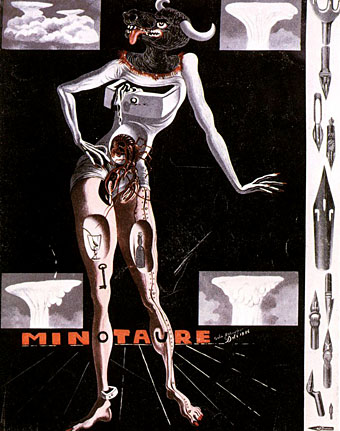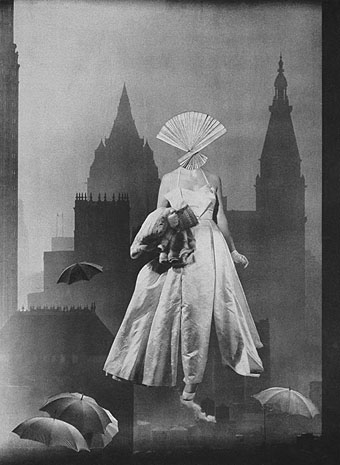
Cover of Minotaure no. 8 (1936) by Salvador Dalí.
• At Dangerous Minds: Irmin Schmidt talks to Oliver Hall about his new album of prepared piano, Nocturne, and also reveals more about the planned release of live recordings by Can.
• “Even the most zealous fan of the genre can learn something new from this book,” says Geeta Dayal in a review of Bring That Beat Back: How Sampling Built Hip-Hop, by Nate Patrin.
• The subject of a previous post but the video was later removed: Italo Calvino in a rare documentary feature for an English audience, on the BBC’s Bookmark in 1985.
• On 9th May, carillonneur Malgosia Fiebig played The Model by Kraftwerk on the bells of the Dom Tower in Utrecht as a tribute to the late Florian Schneider.
• Film footage of Alice Coltrane in her prime is a rare thing so even 17 minutes of TV from 1970 is something special.
• Dan Reynolds on the fantastic alphabets designed by Jean Midolle. See also Luc Devroye’s page.
• Mix of the week: Jon Hassell tribute, part 1: Jon and his collaborators, by Dave Maier.
• Nicolas Winding Refn on some of the films he’s been watching during lockdown.
• At Haute Macabre: Surrealist décor and tiny secret drawers.
• HP Lovecraft dreams of a Providence trolley car in 1927.
• The Museum of Ridiculously Interesting Things
• Xerrox Voyage, a new recording by Alva Noto.
• At Dennis Cooper’s: Jean-Pierre Léaud Day.
• The Model (1979) by Snakefinger | Model (1992) by The Balanescu Quartet | Das Modell (1997) by Rammstein


